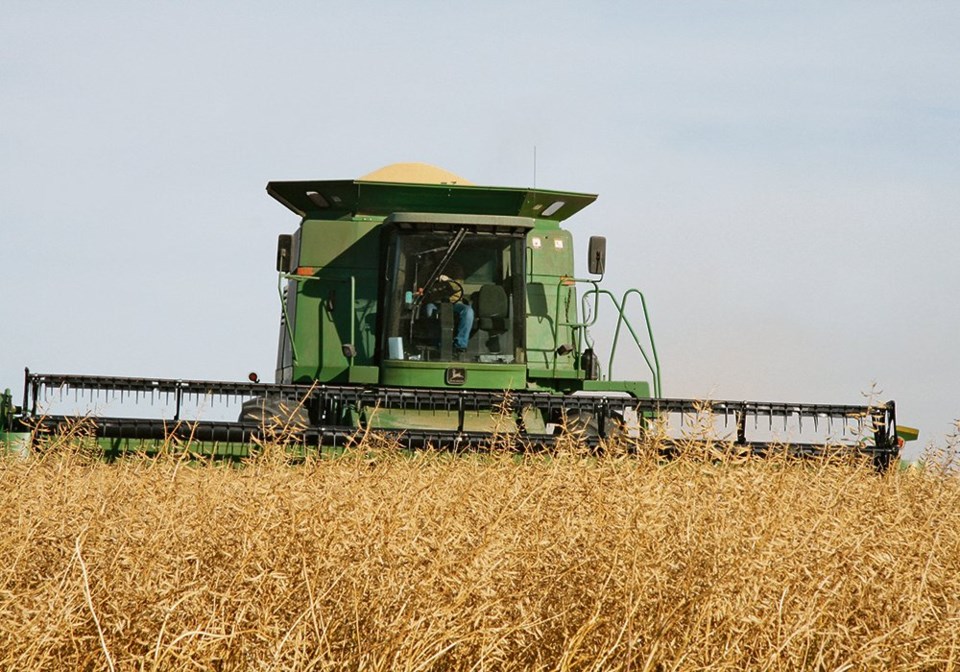WESTERN PRODUCER — Simply put, 2021 was not a good year for mustard growers.
The average yield was about 40 percent of normal and Canadian farmers only produced 50,000 tonnes of mustard seed — a fraction of the typical output.
"It's the smallest crop for decades… in Western Canada," said Chuck Penner, owner of LeftField Commodity Research, who spoke at the annual meeting of SaskMustard, held Jan. 13.
The shortfall of rain and extremely hot temperatures — with 27 days above 30 C last summer in southwestern Saskatchewan — took a severe toll on mustard yields. Saskatchewan Agriculture estimated the provincial yield at 431 pounds per acre. In the southwest, where most mustard is grown, the average yield was 383 lb. per acre.
That's a fraction of the 10-year average for the province, of 1,024 lb. per acre.
Consequently, total output was way below average. Between 2014 and 2019, Canada produced 120,000 to 220,000 tonnes of mustard seed.
With poor production in Saskatchewan and an equally bad crop in North Dakota and Montana, very little mustard is available for buyers this winter in North America.
Price is hard to pin down because there is almost nothing to buy. Mustard could be at $1.40 or $2 per lb., which is massive compared to prices in previous crop years of 30 to 40 cents per lb.
But the gargantuan prices this winter are almost theoretical.
"Compared to previous highs in the market, it (the price) just dwarfs anything," Penner said. "Truth be told, I'm a little surprised that some buyers are even issuing bids, simply because with supplies as low as they are and very little mustard being available for trade… buyers could be bidding $2 per lb., $3 per lb or $4 per lb, and they still wouldn't have any mustard to buy."
On the bright side, the shortage of mustard seed and outstanding prices should encourage more production in 2022.
Last year, Canadian farmers seeded 308,000 acres of mustard, using Statistics Canada estimates. That number could be low, as it's difficult to estimate acres for smaller crops like mustard. But Penner believes acres will hit 400,000 in 2022, a 30 percent increase compared to last year.
Using new crop bids of 70 cents per lb. for yellow mustard and 64 cents for brown mustard, the oilseed could be very profitable for growers in the brown soil zone.
Penner pegged the gross margin for brown and yellow mustard at more than $525 per acre, much higher than the margins for lentils, canola and flax.
"It shows that in that key growing regions (brown soil zone)… mustard comes out as a clear leader," Penner said. "There's a strong financial incentive to put mustard in the ground this year."
A few farmers listening to Penner's presentation expressed doubts about 400,000 acres. Mustard has to compete with crops like canola, which is trading above $17 per bu., for new crop, on the ICE Futures market.
Others, however, believe mustard should get its share of acres in 2022.
"I think his numbers are pretty close…. I don't think he's that far off," said Rick Mitzel, SaskMustard executive director. "If you look at where it is grown, it covers a big area of Saskatchewan. So, I agree with Chuck. I don't think 100,000 acres (increase) is that big a stretch, considering we were at 500,000 acres — three or four years ago."
Another factor working in mustard's favour is new varieties.
Canadian mustard acres:
- 2016 - 510,000;
- 2017 - 385,000;
- 2018 - 503,000;
- 2019 - 399,000;
- 2020 - 256,000;
- 2021 - 308,000.
Source: Statistics Canada
A couple of years ago, Agriculture Canada released a hybrid, AAC Hybrid Brown 18, with much higher yields than open-pollinated varieties.
"Our hybrid brown (mustard) is 20 percent higher yielding. When you're talking about some of the prices for mustard…. That's a pretty significant increase in revenue for a grower," Mitzel said. "We will probably sell out of seed… in the next month or two.
But we're trying to build the awareness, so everybody knows that we have it (hybrids)."
The hybrid, along with acreage gains, should help Canada regain a larger share of the mustard seed market. Global exports of mustard grew from 260,000 tonnes in 2016 to 360,000 tonnes in 2020. But Russia captured most of those new exports, while Canadian sales have been flat.
"There is definitely upside there for us," Mitzel said. "The processors I talk to… they prefer Canadian mustard because it's a seed size that they like and a consistent seed size. They're not getting from those other suppliers."




